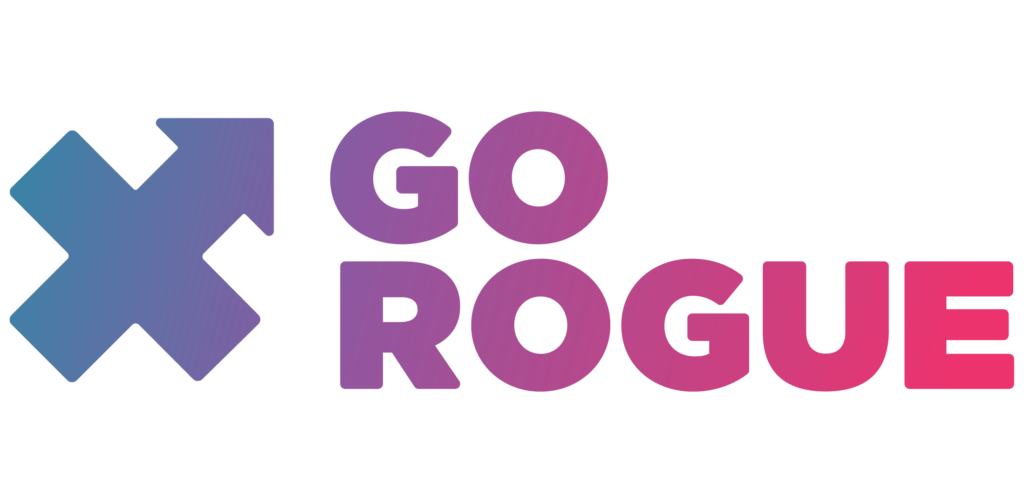Summary
In this week’s episode of Rogue Creators, Bryan Fittin and Loren Lewis chat with Stacie Bloomfield, founder of Gingiber. Stacie is an author, teacher, artist, and business owner – a true creative entrepreneur. After restructuring her business and making a few life changes, Stacie saw Gingiber grow rapidly. Doubling its revenue over the last year, Gingiber is now a million-dollar company, and it’s still growing! Tune in to hear Bryan, Loren, and Stacie talk about Gingiber, giving content away for free, prioritizing mental health, and accidentally watching Midsommar.
Shownotes
(2:11) What are you obsessed with?
(7:53) Introducing Stacie Bloomfield and Gingiber
(19:23) Paid content vs Free Content
(27:45) How prioritizing mental health can benefit your business
(34:40) What’s next for Gingiber?
(40:30) Advice from Stacie
(43:20) Wrap up
(44:35) Rapid fire
Links
Quotes
“I have been trying so hard to like make a book deal happen for years. I’ve been trying to just force a lot of things, and as soon as I kind of exhaled a little bit and relaxed and just started kind of focusing on something else, all this really beautiful stuff started happening in my life.” (12:46)
“You have to get really good as a creative of knowing, like, why you’re doing what you’re doing and let that be your guide for the decisions you’re making.” (18:17)
“You want to give someone with your free content a quick win so that they walk away and really feel like, wow, something in my career shifted, or I have a new perspective that I didn’t have before, and they make the connection between you being the person that helped them get there.” (23:26)
Shattering the Starving Artist Stereotype
Few things are as inspiring as an overnight success story, but the truth is, very few of these stories are as “overnight” as they seem. Stacie Bloomfield and her company Gingiber fit the bill as a success story that looks like it happened suddenly overnight. While her business grew rapidly, she worked tirelessly as a creative entrepreneur with her brand for over a decade. Stacie recently joined Bryan and Loren on Rogue Creators to talk about succeeding as a creative entrepreneur, balancing paid content with free content, and how prioritizing your mental health can benefit your work.
Creating Gingiber
Stacie started her company to fill a personal need. She had her first child, and she needed to decorate a nursery. A little strapped for cash while her husband was in graduate school, Stacie decided to create her own artwork. She began selling her nursery art on Etsy, but after having two more children, she decided that she didn’t want to be pigeonholed into nursery artwork forever.
Around the same time, Stacie noticed that her business was stagnating. She had focused all of her energy on a single revenue stream – her Etsy shop – while ignoring other avenues such as her newsletter and creating a website.
As Stacie began diversifying her revenue streams, she began to explore the educational space. Looking back at her time learning to be a creative entrepreneur, she wished that someone had encouraged her to diversify her revenue streams earlier. Why couldn’t she pass on the things she had learned in her decade of experience to other young creatives?
Now, Stacie teaches an online course focused on leveraging your art into a career as a creative. She is also a published author – her book Give Yourself Margin came out in August of 2020. Her business doubled over the last year, and she now runs a million-dollar company. She has diversified her revenue streams through her online courses, her more than 800 wholesale accounts, licensing her art, and a monthly membership program called the Creative Powerhouse Society. Oh, and she has plans to start a podcast this year.
Free Content vs. Paid Content
When Stacie first began her journey as an educator, she knew that she would need to win people over. She needed to make sure that people would know, like, and trust her enough to pay for her course, and she was quite effective in doing so. Sharing free content was Stacie’s go-to tool for proving to others that she could provide value for them.
Many businesses are worried about giving up too much knowledge or value with their free content. They fear that consumers will be satisfied taking advantage of their free content without indulging in anything behind a paywall, but Stacie’s story proves otherwise. When people find value in what you offer for free, they trust you and want to pay you for more content!
“You want to give someone with your free content a quick win so that they walk away and really feel like, wow, something in my career shifted, or I have a new perspective that I didn’t have before, and they make the connection between you being the person that helped them get there.” (23:26)
Prioritizing Mental Health
When you run a business, it is easy to focus on growing and building your company rather than prioritizing your personal life and mental health. This is something Stacie experienced for years. She directed most of her attention on developing Gingiber, always thinking that this step or that move would bring more growth or success. During this time, she saw relative success, but 12% growth year over year when you start at $2,000 of revenue will only take you so far.
One year after beginning to burn out, Stacie kept thinking about the phrase “give yourself margin.” She decided to make it her motto for the year. She started only creating the art that she wanted to create. She traveled with her husband, went on walks, did yoga, and went to therapy – all the things she wanted to do but felt like she couldn’t because she was focusing on growing her business.
“I have been trying so hard to like make a book deal happen for years. I’ve been trying to just force a lot of things, and as soon as I kind of exhaled a little bit and relaxed and just started kind of focusing on something else, all this really beautiful stuff started happening in my life.” (12:46)
It’s no coincidence that that year was the most successful year that she had had. Her business grew more than ever before, and she was offered a book deal. Now, Stacie is an advocate for prioritizing mental health. She believes that when you step back to think about what you want to do rather than forcing things to happen, opportunities come to you.
“You have to get really good as a creative of knowing, like, why you’re doing what you’re doing and let that be your guide for the decisions you’re making.” (18:17)


